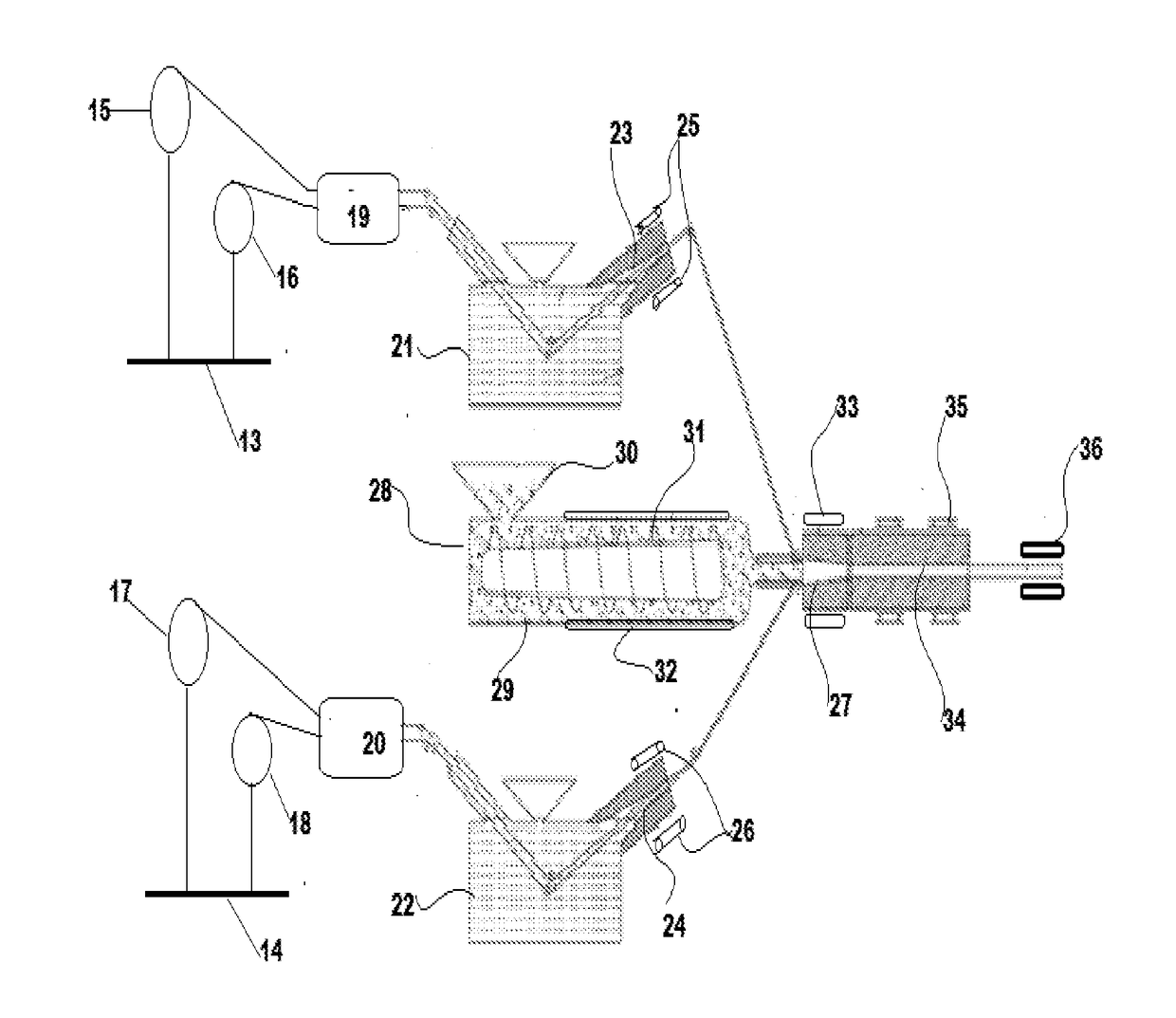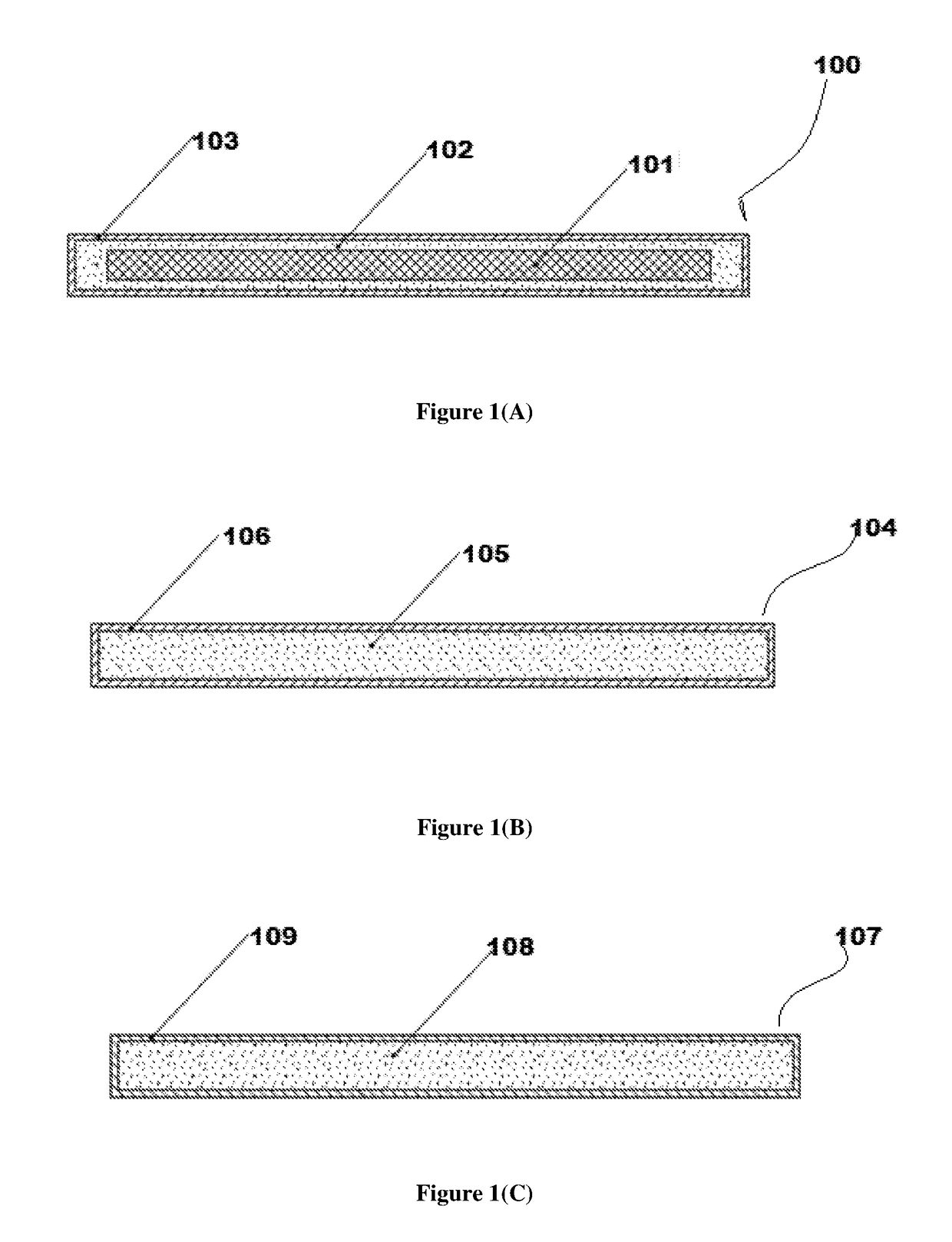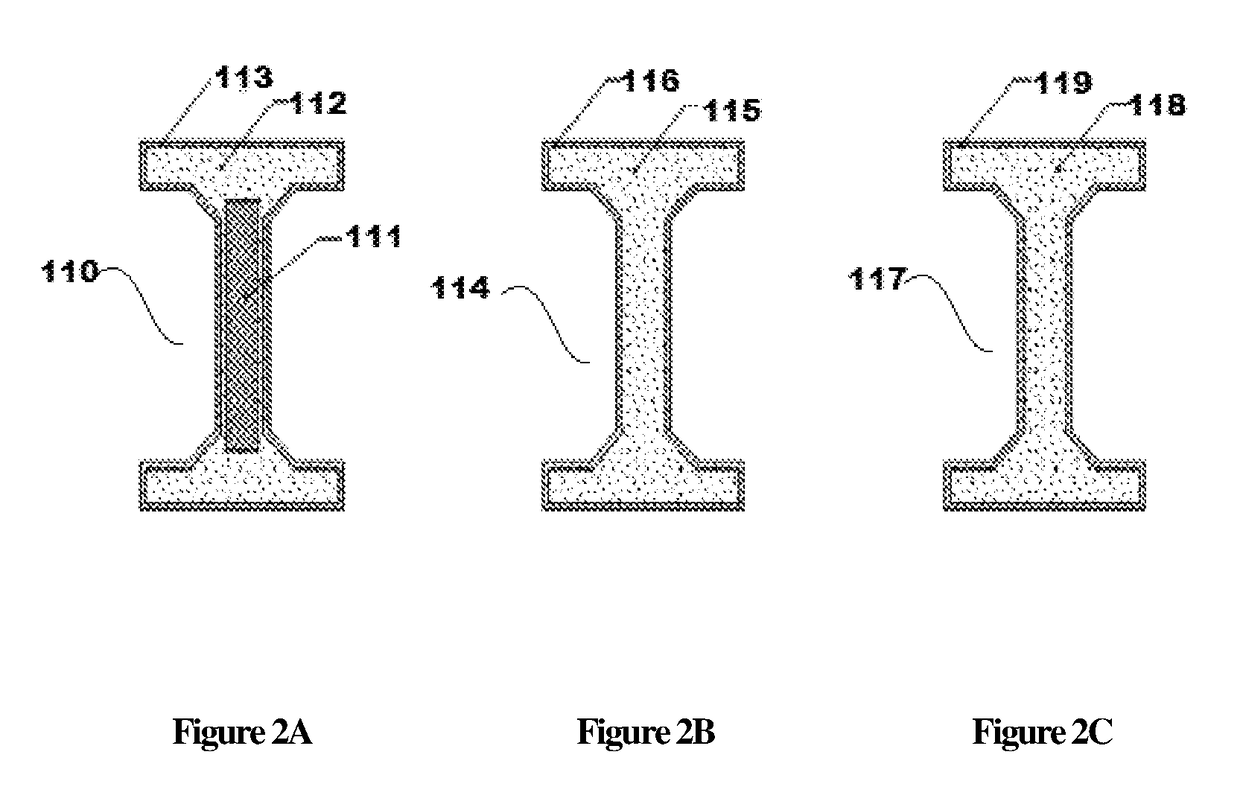System of continuous pultrusion method for manufacturing of bio-composite products; process and products thereof
a technology of biocomposite and pultrusion method, which is applied in the direction of construction elements, applications, domestic applications, etc., can solve the problems of reduced strength and stiffness, and limited use of synthetic frp composite materials in non-primary or non-load-bearing applications, so as to reduce material wastage, cost-effective and efficient
- Summary
- Abstract
- Description
- Claims
- Application Information
AI Technical Summary
Benefits of technology
Problems solved by technology
Method used
Image
Examples
example 1
“A” Bio-Composite Product “Plate” Profile
[0179]“Plate” profile flat pultruded product having a cross section 8×1000 mm was manufactured with 20% unidirectional glass fabric, 24% jute mat, and 56% resin system, all measured by volume.
[0180]Jute mat having weight of 2500 g / m2, a density of about 85 kg / m3 and a thickness of 20 mm was used here (manufactured at Dindayal Gupta Pvt ltd, Kolkata).
[0181]24% by vol. of jute mats of 2500 GSM was provided by roller mean (2) and 20% by vol. of unidirectional glass fabric of 200 g / m2 was provided by roller means (1 and 3). These fibers were passed through IR heater (5) at speed 4 meter per hour to reduce moisture to 3 to 4%. These fibers were impregnated by passing them at speed 4 meter per hour through the resin bath (6) comprising a resin system consisting of 100 part phenol formaldehyde (68 to 72% resole type phenol formaldehyde in water supplied by Shivam polymer Pvt. Ltd.) and 20 parts methanol. Both impregnated fabric and mat were passed t...
example 2
“B” Bio-Composite Product “Plate” Profile
[0182]“Plate” profile flat pultruded product having a cross section 8×1000 mm was manufactured with 15% unidirectional glass fabric, 35% jute mat, and 50% resin system, all measured by volume by following same method as described in Example 1.
example 3
“C” Bio-Composite Product “Plate” Profile
[0183]“Plate” profile flat pultruded product having a cross section 8×1000 mm was manufactured with 10% unidirectional glass fabric, 45% jute mat, and 45% resin system, all measured by volume by following same method as described in Example 1.
PUM
| Property | Measurement | Unit |
|---|---|---|
| speed | aaaaa | aaaaa |
| temperature | aaaaa | aaaaa |
| temperature | aaaaa | aaaaa |
Abstract
Description
Claims
Application Information
 Login to View More
Login to View More - R&D
- Intellectual Property
- Life Sciences
- Materials
- Tech Scout
- Unparalleled Data Quality
- Higher Quality Content
- 60% Fewer Hallucinations
Browse by: Latest US Patents, China's latest patents, Technical Efficacy Thesaurus, Application Domain, Technology Topic, Popular Technical Reports.
© 2025 PatSnap. All rights reserved.Legal|Privacy policy|Modern Slavery Act Transparency Statement|Sitemap|About US| Contact US: help@patsnap.com



